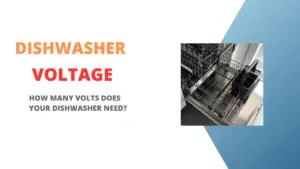Low voltage is a common electrical issue that can affect various appliances in our homes, including refrigerators.
In this article, we will explore the potential damage that low voltage can cause to a fridge and discuss ways to protect and prevent such damage.
Low voltage can harm a fridge primarily by straining the compressor, impacting cooling performance, causing malfunctions in electronic components, and burning out the compressor motor.
Understanding the impact of low voltage on refrigerators is essential for maintaining their optimal performance and longevity.
Understanding Refrigerator Electrical Requirements
Refrigerators are designed to operate within specific voltage ranges to ensure efficient cooling and proper functioning.
Most household refrigerators require a standard voltage of around 110-120 volts AC. It is important to note that refrigerators may have different electrical requirements based on their size, model, and features.
To meet the voltage requirements, it is advisable to have a stable power supply with minimal fluctuations.
However, in regions with inconsistent voltage levels, voltage stabilizers or regulators can be used to mitigate the effects of low voltage on appliances.
Effects of Low Voltage on Refrigerators
Low voltage can have several adverse effects on refrigerators, potentially leading to performance issues and component damage.
Understanding these effects can help in identifying and addressing problems caused by low voltage. Here are some of the common impacts:
1. Potential Damage to the Compressor
The compressor is a vital component responsible for circulating refrigerant and maintaining the desired temperature inside the fridge.
Low voltage can strain the compressor, causing it to overheat and potentially leading to compressor failure. This can result in inadequate cooling and increased energy consumption.
2. Impact on Cooling Performance
Low voltage directly affects the cooling capability of a refrigerator. Insufficient voltage can hinder the compressor’s ability to generate the necessary pressure to condense the refrigerant, leading to inadequate cooling.
This can result in food spoilage, ineffective preservation, and an increase in internal temperatures.
3. Malfunctioning of Electronic Components
Modern refrigerators incorporate electronic components such as control boards, sensors, and digital displays.
These components are sensitive to voltage fluctuations. Low voltage can disrupt their proper functioning, causing erratic behavior, display malfunctions, or complete failure of electronic parts.
4. Increased Energy Consumption
When a refrigerator operates under low voltage conditions, it compensates by running longer cycles to maintain the desired temperature.
Prolonged operation not only reduces the fridge’s overall efficiency but also leads to increased energy consumption. This can have a significant impact on energy bills and the environment.
Signs of Low Voltage Damage in a Fridge
Detecting the signs of low voltage damage is crucial for timely intervention and repair. If you notice any of the following signs, it is likely that your refrigerator has been affected by low voltage:
1. Inconsistent Cooling
The fridge may struggle to maintain a consistent temperature, resulting in uneven cooling throughout its compartments. Some areas might become excessively cold, while others remain relatively warmer.
2. Unusual Noises
Low voltage damage can cause the compressor to operate inefficiently, leading to strange noises such as buzzing, rattling, or clicking sounds. These noises indicate potential problems that should be addressed promptly.
3. Frequent Cycling On and Off
A refrigerator affected by low voltage might experience frequent and unnecessary cycling, where it turns on and off more frequently than usual. This behavior can lead to compressor wear and tear, compromising its overall lifespan.
4. Frost Buildup or Ice Formation
Inadequate cooling due to low voltage can result in frost buildup or ice formation in the freezer compartment. Excessive ice accumulation can hinder proper airflow and lead to further cooling issues.
5. Electrical Component Failure
If the electronic components of the fridge malfunction or stop working altogether, it could be a result of low voltage damage.
Non-responsive displays, unresponsive controls, or error messages are indications of potential damage.
Protection and Prevention Measures
To protect your fridge from low voltage damage, consider the following measures:
1. Using Voltage Stabilizers or Regulators
Installing voltage stabilizers or regulators can help maintain a stable voltage supply to the refrigerator.
These devices automatically adjust the voltage levels, protecting appliances from the adverse effects of low voltage.
2. Regular Maintenance Checks
Perform routine maintenance checks on your fridge to ensure proper functioning. Clean the condenser coils, inspect the electrical connections, and look for signs of damage or wear.
Regular maintenance can help identify and address potential issues early on.
3. Consulting a Professional Electrician
If you experience persistent low voltage issues or suspect damage to your refrigerator, it is advisable to consult a professional electrician.
They can assess the electrical system and provide appropriate solutions to prevent further damage.
Read also my article: Power up your toaster: Can you use an extension cord?
Troubleshooting and Repair Options
If you suspect low-voltage damage to your refrigerator, consider the following troubleshooting and repair options:
1. Resetting the Fridge
Sometimes, power fluctuations can cause minor disruptions in the fridge’s functioning. Try unplugging the refrigerator from the power source for a few minutes and then plug it back in. This simple reset may resolve temporary issues caused by low voltage.
2. Checking Power Supply and Connections
Ensure that the power supply to the refrigerator is stable and within the required voltage range. Check the power cord, outlet, and electrical connections for any signs of damage or loose connections. If necessary, consult an electrician to address any electrical issues.
3. Component Replacement or Repair
If low voltage damage has caused significant issues in your refrigerator, it may require professional repair or component replacement.
Contact a qualified appliance technician to assess the damage and perform the necessary repairs or replacements.
Conclusion
Low voltage can indeed damage a refrigerator, impacting its cooling performance, causing component malfunctions, and increasing energy consumption.
Recognizing the signs of low voltage damage and taking preventive measures such as using voltage stabilizers and performing regular maintenance can help protect your fridge from potential harm.
If you suspect low voltage damage, consult a professional electrician or appliance technician to ensure the proper functioning and longevity of your refrigerator.


